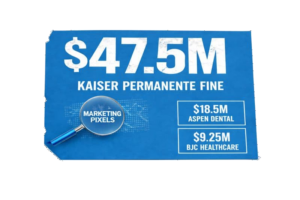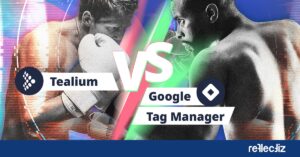CSP Security: 10 Best Content Security Policies

Updated on Feb 5th, 2025
From small startups to massive conglomerates, every organization faces the risk of cyberattacks. Although security measures have improved, hackers continuously find new methods to bypass them. One of the most common ways hackers access a site or network is by taking advantage of weak content security policies and injecting their malicious code into it through existing content. That’s why organizations should carefully consider their CSP security strategy.
Statistics suggest that close to 40% of cyberattacks targeting large US and European companies in 2019 used cross-scripting, a form of attack that exploits content security vulnerabilities. Organizations have turned to strict content security policy measures to help mitigate the problem in the past. But cybercriminals are quickly outpacing this solution.
What Is Content Security Policy (CSP), and How Does It Work?
Content Security Policy (CSP) is a computer security standard that has been in use since 2004. This veteran technique aims to combat code injection attacks such as cross-site scripting (XSS) and clickjacking, which target website areas where users can add content (such as checkout pages).
While CSP can help protect against these attacks, it requires adding a CSP HTTP header into the webpage and assigning specific values to control the resources users add to it, including pictures, videos, and forms. Delineating specific values to all incoming content makes it harder for attackers to inject code into your websites through user uploads.
CSPs allow you to restrict the content your users can upload to the site through directives in the HTTP response header or via specific page-level directives through HTML meta tags. To be effective, a CSP needs to be well planned. CSPs are directives that guide which resources (images, fonts, multimedia, and especially scripts) the user must add to ensure that their browsing environment remains secure.
CSP Security: 10 Most Commonly Used CSPs
CSPs can vary, and what makes one policy better than another can depend on your site’s specific needs. We’ve collected our top eight recommendations for 2022 for you to pick and choose what may work best with your existing CSP, your other cybersecurity policies, and, most importantly, your organization’s unique needs.
1: Basic CSP Policy
This basic policy limits the resources used in the default directives to resources from the originating domain and prevents inline scripts/styles execution. That’s how this policy contains cross-site framing and cross-site form submission. In other words: These restrictions reduce your site’s attack surface, making it more secure. This policy can be applied to most modern browsers.
The most basic policy assumes:
- There aren’t any form submissions to external websites
- Other websites aren’t needed to frame the website
- The same domain hosts all resources as the document
- There aren’t any inlines or evals for scripts and style resources
The basic policy:
Content-Security-Policy: default-src ‘self’; frame-ancestors ‘self’; form-action ‘self’;
This can be made more secure by applying:
Content-Security-Policy: default-src ‘none’; script-src ‘self’; connect-src ‘self’; img-src ‘self’; style-src ‘self’; frame-ancestors ‘self’; form-action ‘self’;
This only allows the content of the same origin to be added.
2: Basic CSP Policy – upgrade-insecure-requests
This directive is for developers migrating from HTTP to HTTPS. It ensures that all of a site’s insecure URLs served over HTTP are treated as though they have been replaced with secure URLs (served over HTTPS). This policy is designed for websites with many insecure legacy URLs, which must now be converted to secure URLs.
Content-Security-Policy: upgrade-insecure-requests;
3: Basic CSP Policy to Prevent Framing Attacks
Framing attacks such as clickjacking and cross-site leaks rely on leveraging vulnerabilities in the site to slip in third-party outsider content. For example, clickjacking hides the malicious code and tricks users into clicking an element disguised as another. Implementing a CSP policy to prevent these attacks can be done with the following directives:
- To forbid all framing of your content:
Content-Security-Policy: frame-ancestors ‘none’; - To allow framing for the site itself:
Content-Security-Policy: frame-ancestors’ self’; - To allow framing from trusted domains:
Content-Security-Policy: frame-ancestors trusted.com;
Forbidding all frame-ancestors prevents any page framing, making attacks such as clickjacking impossible. Like all CSP directives, this directive can be customized to allow specific origins, such as framing from self or the same origin.
4: Strict Policy
A strict content security policy is based on nonces or hashes. Using a strict CSP prevents hackers from using HTML injection flaws to force the browser to execute the malicious script. The policy is especially effective against classical stored, reflected, and various DOM XSS attacks.
While all these are XSS attacks, there are slight variations. DOM-based XSS processes data that originates from an untrusted source by writing the data to a possibly dangerous sink within the DOM. Reflected XSS occurs when a site or application receives data in an HTTP request, including data within the immediate response in an insecure way. Finally, stored XSS injects code into the server, where user input is usually stored. This type of attack can only be leveled against sites that store user data, such as message boards. Strict content security policies can prevent all these attacks.
A strict policy can be applied at the following two levels:
- Moderate Strict Policy:
script-src ‘nonce-r4nd0m’ ‘strict-dynamic’;
object-src ‘none’; base-uri ‘none’; - Locked Down Strict Policy:
script-src ‘nonce-r4nd0m’;
object-src ‘none’; base-uri ‘none’;
CSP Security: What is a Nonce?
A nonce (short for “number used once”) is a unique, random value generated for each request. When a strict CSP is applied with a nonce, only scripts that include the correct nonce value are allowed to execute. This prevents unauthorized inline scripts from running, even if an attacker injects malicious JavaScript into the page.
For example:
script-src ‘nonce-r4nd0m’;
- The browser will only execute scripts that have the matching ‘nonce-r4nd0m’.
- Even if an attacker injects a <script> tag, it won’t run unless it has the correct nonce, which is generated dynamically and changes with every page load.
By implementing nonces, you can remove ‘unsafe-inline’ from your CSP, significantly enhancing your site’s security posture.
5: Refactoring Inline Code
When the default default-src or script-src directives are active, the security policy disables any JavaScript code placed inline in the HTML by default. For example:
<script> var num = "20" <script>
The inline code is moved to a separate JavaScript file and the page’s code becomes:
<script src="app.js"> </script>
The app.js now contains the var num = “20” code.
The inline code restriction also applies to inline event handlers, making the following construct blocked under the CSP:
<button id="button1" onclick="doSomething()">
This must be replaced by addEventListener calls:
document.getElementById("button1").addEventListener('click', doSomething);
6: CSP with Fetch Directives
Fetch directives control the locations from which specific resources can be loaded, telling the browser which sources to trust. When it comes to CSPs, fetch directives allow you to control the location from which resources can be loaded from, preventing foreign and malicious resources from infiltrating your site.
Directives such as script-src give developers the ability to allow trusted sources of script to execute on the page, font-src delineates the source of web fonts, and child-src allows developers to control nested browsing contexts and worker execution contexts. In addition, the directives allow developers to limit the source of content that can access the site, preventing attackers from adding malicious code. A directive is always needed, so if one isn’t added to the CSP header, the system will automatically fall back on the default-src.
7: CSP with Document Directives
Document directives inform the browser which properties of the document the content security policies apply to. For example, by restricting URLs that can be used as the document’s element:
Content-Security-Policy: base-uri <source>;
Content-Security-Policy: base-uri <source> <source>;
Or by enabling a sandbox for the requested resource:
Content-Security-Policy: sandbox;
Content-Security-Policy: sandbox <value>;
8: CSP with Navigation Directives
Navigation directives restrict the URLs to which a document can navigate or submit forms. In turn, navigation directive policies control what location users can navigate or submit forms to. Navigation directives don’t revert to default-src directives and instead include directives such as:
- Restricting URLs forms can be submitted to:
Content-Security-Policy: form-action <source>;
Content-Security-Policy: form-action <source> <source>; - The URL a document can initiate navigation to:
Content-Security-Policy: navigate-to <source>;
Content-Security-Policy: navigate-to <source> <source>;
9: CSP with Worker Directives
Worker directives manage the sources from which web workers and shared workers can be loaded. This helps ensure that only trusted scripts can execute in worker threads, reducing the risk of malicious background processes.
Restricting web worker sources:
Content-Security-Policy: worker-src <source>;
Content-Security-Policy: worker-src <source> <source>;
10: CSP with Sandbox Directives
Sandbox directives apply security restrictions to iframes, similar to the sandbox attribute in HTML. These restrictions limit the iframe’s capabilities, such as running scripts, submitting forms, or navigating the top-level page.
Applying sandbox restrictions:
Content-Security-Policy: sandbox;
Content-Security-Policy: sandbox allow-scripts allow-forms;
Bonus CSP
11: CSP with Form Submission Directives
Form submission directives restrict the URLs where forms can send data. This helps prevent malicious actors from intercepting sensitive user input by ensuring that form submissions are only allowed to trusted sources. Unlike other directives, form-action does not fall back to default-src.
Restricting URLs forms can be submitted to:
Content-Security-Policy: form-action <source>;
Content-Security-Policy: form-action <source> <source>;
CSP Security: Taking Your Security Policies to the Next Level
Each CSP has its pros and cons. Knowing which CSP will work best for your organization may require some trial and error, which is why CSP testing is an indispensable part of the process. As CSPs play a critical role in controlling content sources and page behavior, a single error may make your page entirely inaccessible to visitors. Testing your CSP before implementation enables you to see if it meets your organization’s needs (and avoid costly or embarrassing errors).
Despite their benefits, CSPs are not the right solution for everyone. While CSPs can help prevent malicious code injection, attack methods have evolved beyond the limited protection CSPs can offer. Although CSPs are generally effective, it’s best not to rely on a CSP as a standalone solution. Instead, combine it with other security measures such as SRI, discovery tools, and validation tests. To learn more about website security and other solutions you can implement with your CSP, check out Reflectiz free trial here.
Subscribe to our newsletter
Stay updated with the latest news, articles, and insights from Reflectiz.
Related Articles
Your Website looks great!
But what’s happening behind the scenes?
Discover your website blind spots and vulnerabilities before it’s too late!







![5 Threats That Reshaped Web Security This Year [2025]](https://www.reflectiz.com/wp-content/uploads/2025/12/5THREATS-300x156.jpg)